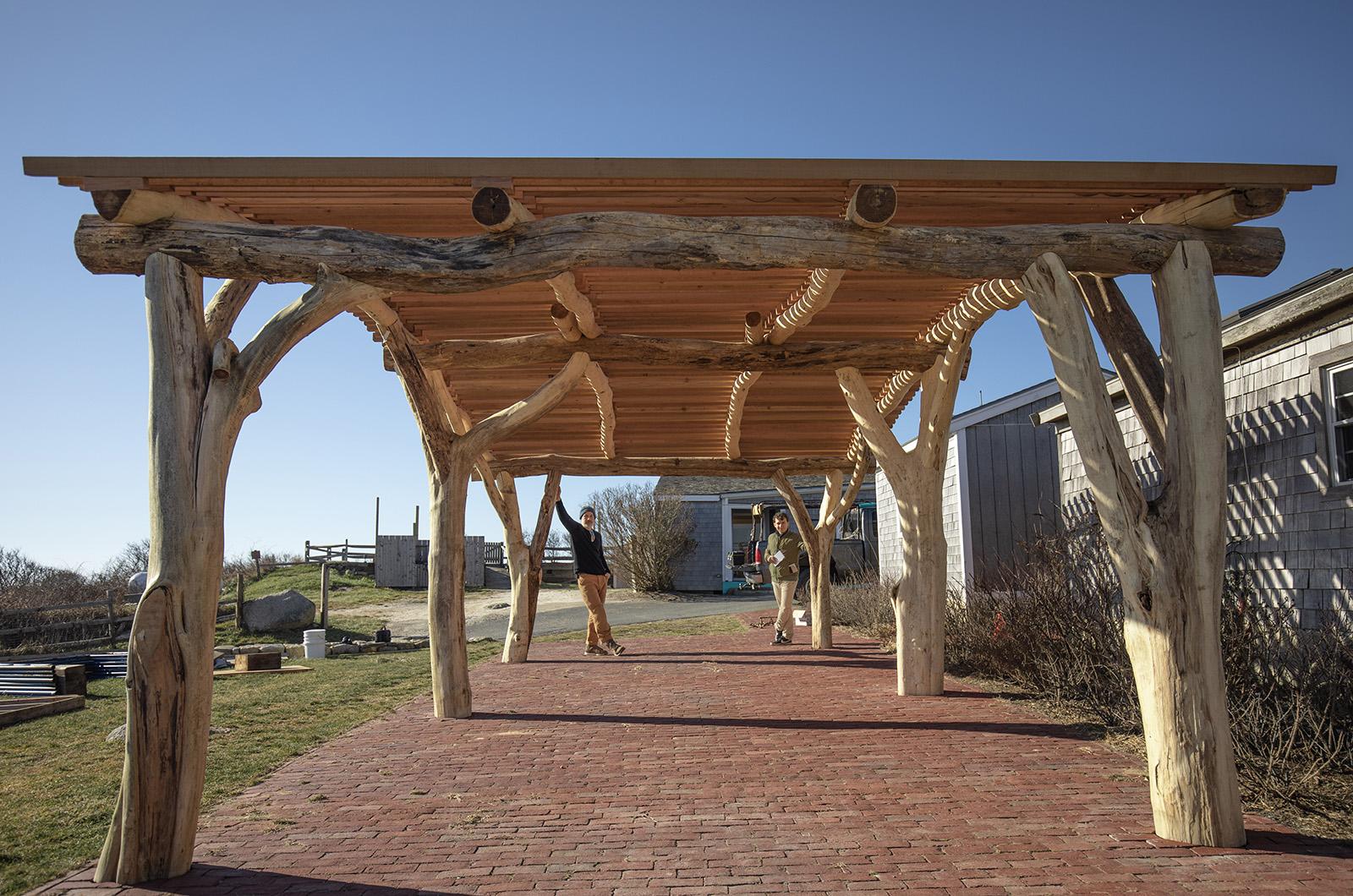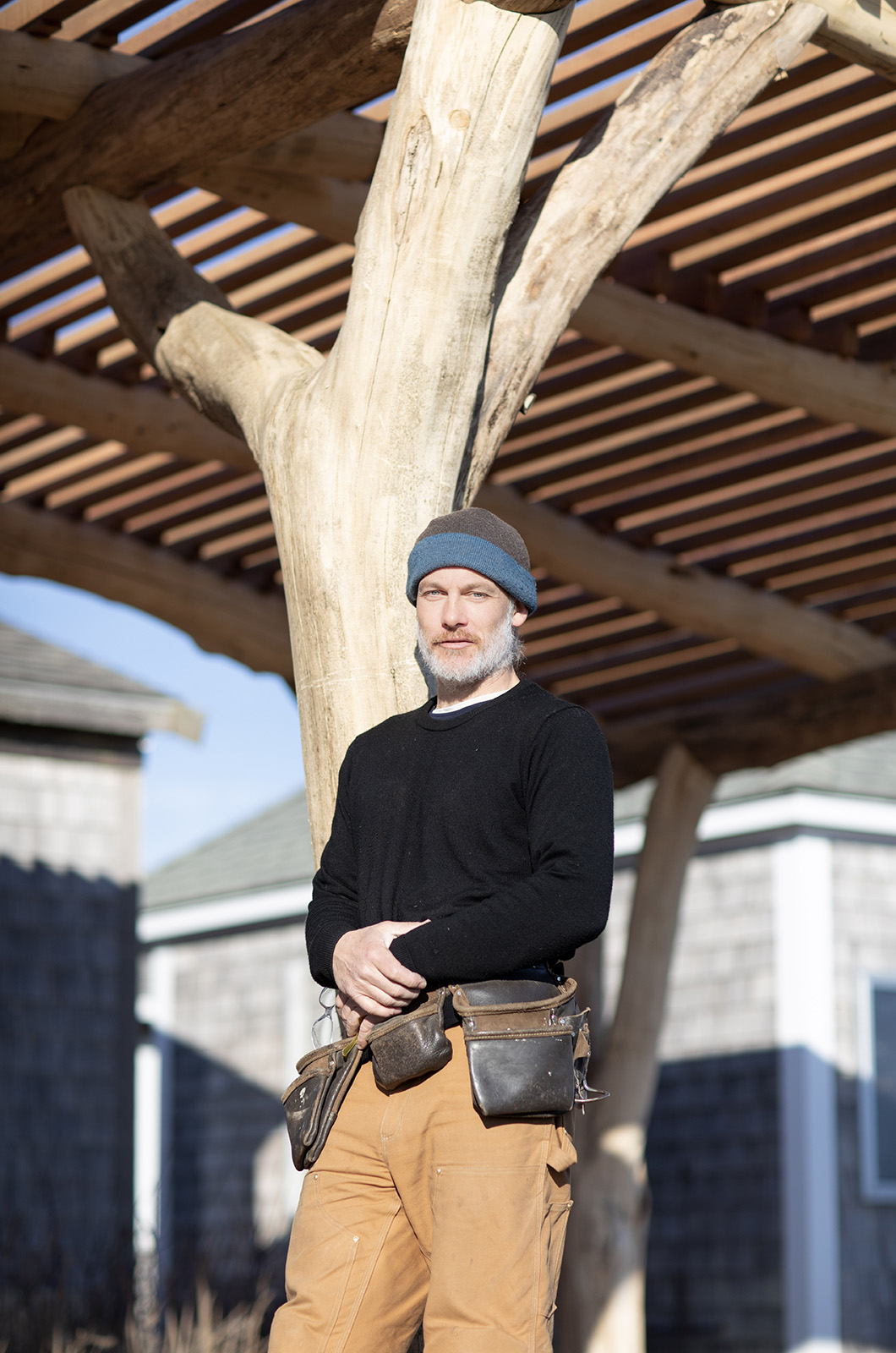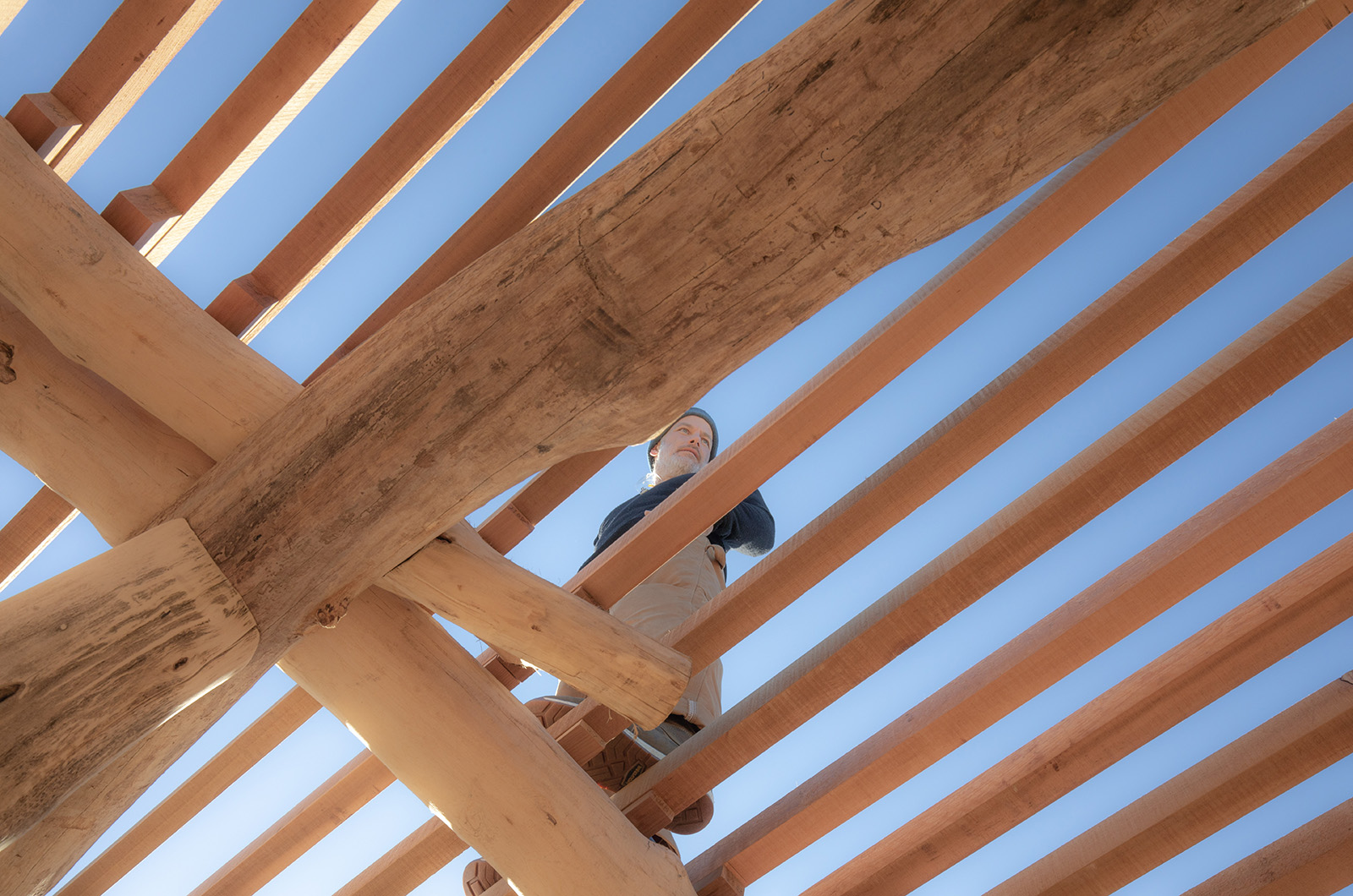Behind Aquinnah Circle’s rolling green hills, beside the small, gray-shingled Cliff Shops, six new trees have sprouted, though their canopies were severed long ago. Upon these bark-stripped trunks sit still more trees, perfectly arched, stretching the whole, 28-foot length of a newly-constructed summer shade structure.
On a bright, cold morning near the end of 2022, Island artist Tim Laursen stood beneath his work, pausing as passersby encountered and marveled at his colossal creation.
“I love just standing here and listening,” said Mr. Laursen.
The positive reaction, he said, has been a relief — for a structure in such a prominent location, planned and constructed over the course of a year, it was easy to doubt his vision.
“If people didn’t like it, it would be obvious,” he said. “It was an honor to build in this location... you can’t beat the view, but you can add to it and complement it.”
Mr. Laursen first learned of the Aquinnah shade structure project last autumn, when the town issued a request for proposals (RFP) with funding from the Community Preservation Act and private donors. The proposal asked for an artist to use the natural shape of trees in its construction — a goal Mr. Laursen treated with utmost seriousness.
By way of explaining his approach, Mr. Laursen recounted the lumber-finding process of legendary Italian luthier Stradivarius.
“He would walk the woods, looking at the trees, until he found one he thought had a violin in it. Then he would cut it down and carve,” he said.
At first glance, the project seems something of a departure for the Island-born artist, best known for his solar-powered kinetic Sun Bird sculpture now at the Martha’s Vineyard Museum. But, as Mr. Laursen explained, it is all part of one journey.
“I’ve been basically training and learning, and being curious for the last 25 years, building a whole skill set of machining, welding, woodworking,” he said.
After college, Mr. Laursen spent the next two decades playing music, making robotic artwork and working in design and construction. In 2019, he returned to the Vineyard from New York city and built a workshop in West Tisbury. He now splits his time between his catering business and artistic endeavors.
The shade structure began with a months-long wood-finding expedition, trekking through forests from Edgartown to Squibnocket in search of the perfect trees. Early on, he determined that the best wood for the project was black locust, a sturdy member of the pea family, invasive yet beloved on the Vineyard.
“It’s really strong, one of the strongest hardwoods in North America,” Mr. Laursen said.
The wood’s low propensity for water absorption and rot has made it a favorite of dock builders and farmers alike.
“Farmers bury it in the ground and it can last a hundred years without rotting,” he said.
Mr. Laursen spent months haunting the Vineyard’s sandy woodlands, developing “probably the best database of black locusts on the Island.” The arch trees alone, those 28-foot curved behemoths that frame the roof of the structure, took a month to locate.
“When we would walk through the wood, I would be putting my face on the base of the tree and looking up, and if I found that curve I would look more, and I might harvest it,” he said.
The process of cutting and moving the trees (some weighed up to 900 pounds) was integral to his artistic process, Mr. Larsen said.
“This project is as much about rigging as about carpentry,” he said. “I purposely limit my tools, I don’t have a Bobcat . . . All I have is my mechanical advantage. I have my pulleys and chains.”
The impression of the structure is naturalistic, each of its legs and arch pieces retaining their natural shape. The joints retain their shape as well, made to exactly hug the curvature of the logs with a bubble scribe tool, a bit like a mathematical compass. All the metal joining the pieces is internal — from the outside, only wood is visible.
Its remains untreated and over time the yellow will fade to a distinguished silver.
Looking back on his journey to a finished structure, Mr. Laursen thinks of it as an incredible learning experience, a steppingstone for more artistic endeavors he has planned. It is also one he didn’t do alone, he said.
“I used so many people for asking questions, anyone who would listen,” he said. “There’s little pieces of so many people in this.”










Comments (12)
Comments
Comment policy »